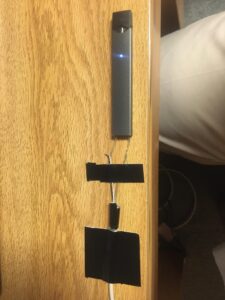Looking to get your car battery up and running again? Wondering how to use a car battery charger? Well, you’re at the right place! In this article, we will guide you through the process of using a car battery charger effectively. No need to worry about complicated steps or technical jargon, as we’ll break it down for you in simple and easy-to-understand terms. So, let’s dive in and get your car battery charged up in no time!
How to Use a Car Battery Charger
Introduction
Before we delve into the details of how to use a car battery charger, it is essential to understand the importance of maintaining a healthy car battery. Your car battery is responsible for powering the electrical systems of your vehicle, including starting the engine. However, batteries can lose their charge over time or due to various circumstances, such as leaving the lights on or not driving the car for an extended period. Using a car battery charger is a cost-effective and convenient way to recharge your battery and ensure it functions optimally. In this guide, we will walk you through the step-by-step process of using a car battery charger effectively and safely.
Checking the Charger
Before you begin using a car battery charger, it is crucial to check that it is in good condition and compatible with your battery. Here are a few things to consider:
- Make sure the charger is suitable for the type of battery you have. Most car batteries are lead-acid batteries, but it is essential to confirm this before proceeding.
- Check the charger’s voltage and amperage rating. The voltage should match your battery’s voltage, typically 12 volts for most cars. The charger’s amperage is the rate at which it charges the battery; higher amperage means faster charging.
- Inspect the charger’s cables and clamps for any damages, such as fraying or exposed wires. Using a charger with damaged cables can be dangerous and may cause electric shock or fire.
Choosing the Right Location
After ensuring your charger is in good condition, it’s time to find a suitable location for the charging process. Consider the following factors when selecting a location:
- Ensure you work in a well-ventilated area. Charging a battery can produce gases, so it’s crucial to avoid enclosed spaces where the gases can accumulate.
- Choose a flat and stable surface to place the charger and battery during the charging process. This will prevent any accidents or damage caused by the equipment falling over.
- Keep the charger and battery away from any flammable materials or sources of ignition.
Connecting the Charger
Now that you have prepared your charger and chosen a suitable location, it’s time to connect the charger to the battery. Follow these steps:
- Turn off your vehicle and remove the ignition key to ensure safety.
- Identify the positive and negative terminals on your car battery. The positive terminal is usually marked with a “+” symbol and is typically colored red. The negative terminal is usually marked with a “-” symbol and is usually black.
- Connect the positive (red) clamp of the charger to the positive terminal of the battery. Ensure a secure connection by clamping it tightly.
- Connect the negative (black) clamp of the charger to the negative terminal of the battery. Again, ensure a secure connection.
Setting up the Charger
Once the charger is connected to the battery correctly, you can proceed with setting up the charger. Here’s what you need to do:
- Refer to the instruction manual of your specific charger to understand its features and settings.
- Set the charger to the appropriate settings based on the battery’s voltage and the charger’s amperage rating. This ensures the charger delivers the correct amount of power to the battery.
- Double-check that all connections are secure and that there are no loose cables.
Charging the Battery
With everything set up, you are now ready to initiate the charging process. Follow these steps:
- Plug the charger into a power outlet. Ensure the outlet is properly grounded.
- Switch on the charger to start the charging process. Some chargers may have a “Start” or “On” button.
- Monitor the charger and battery while they are charging. Most chargers have a built-in indicator or meter that displays the battery’s charging progress.
- Allow the charger to complete the charging cycle. The duration of the process depends on various factors such as the battery’s capacity and the charger’s amperage rating.
Disconnecting the Charger
Once the battery is fully charged, it’s time to disconnect the charger. Follow these steps:
- Switch off and unplug the charger from the power outlet.
- Disconnect the charger’s clamps from the battery terminals. Start with the negative (black) clamp followed by the positive (red) clamp.
- Double-check that all connections are disconnected safely.
Maintaining a healthy car battery is crucial for the overall performance of your vehicle. By following the steps outlined in this guide, you can effectively use a car battery charger to recharge your battery and ensure it lasts longer. Remember to always prioritize your safety by checking the charger’s condition, choosing a suitable location, and following the manufacturer’s instructions. By regularly monitoring and maintaining your battery’s charge, you can avoid unexpected breakdowns and enjoy a reliable driving experience.
Remember, if you have any specific questions or concerns about using a car battery charger, consult the manufacturer’s instructions or seek professional assistance. Stay safe and keep your car ready to hit the road!
How to use Car Battery Charger
Frequently Asked Questions
How do I use a car battery charger?
Using a car battery charger is a straightforward process. Here are the steps to follow:
Can I use any car battery charger for my vehicle?
No, it is important to ensure that the car battery charger you use is compatible with your vehicle. Check the charger’s specifications and make sure it supports the battery voltage and type of your car.
What are the safety precautions to consider when using a car battery charger?
When using a car battery charger, it is important to prioritize safety. Here are a few precautions to consider:
- Read the charger’s user manual and follow the instructions carefully.
- Make sure the charger is turned off and unplugged before connecting or disconnecting it from the battery.
- Ensure the charger is kept away from any flammable materials.
- Wear protective goggles and gloves while working with the battery.
- Connect the charger’s positive cable to the positive terminal of the battery and the negative cable to the negative terminal.
- Double-check the polarity to avoid any damage.
How long does it take to charge a car battery with a charger?
The charging time depends on various factors, such as the battery’s capacity and the charger’s output. On average, it can take a few hours to fully charge a car battery.
Can I leave the car battery connected to the charger overnight?
It is not recommended to leave the car battery connected to the charger overnight. Overcharging can damage the battery and reduce its lifespan. It is advisable to monitor the charging process and disconnect the charger once the battery is fully charged.
Final Thoughts
Using a car battery charger is a simple and effective way to keep your vehicle’s battery in optimal condition. To start, make sure the charger is compatible with your car’s battery type. Connect the charger’s positive clamp to the positive terminal and the negative clamp to the negative terminal. Set the charger to the appropriate charging mode and start the charging process. Monitor the charging progress and disconnect the charger once the battery is fully charged. By following these steps, you can easily and safely use a car battery charger to maintain and extend the life of your battery.



